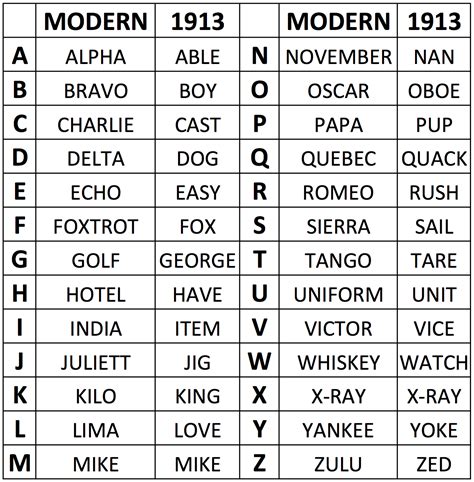The military has a long history of using code words and phonetic alphabets to clearly communicate letters and numbers, especially in situations where standard letter pronunciation may be unclear. One of the most well-known phonetic alphabets is the NATO phonetic alphabet, also known as the International Radiotelephony Spelling Alphabet. This system assigns code words to each letter of the alphabet to avoid confusion between similar-sounding letters.
Understanding the NATO Phonetic Alphabet

The NATO phonetic alphabet is used by military forces, as well as in aviation, navigation, and other fields where clear communication is critical. Each letter of the alphabet is assigned a unique code word that is distinct and easy to understand, even in noisy or stressful environments. For example, the letter “A” is represented by the code word “Alpha,” the letter “B” by “Bravo,” and so on.
Breakdown of the NATO Phonetic Alphabet
The following table provides the code words for each letter of the alphabet:
| Letter | Code Word |
|---|---|
| A | Alpha |
| B | Bravo |
| C | Charlie |
| D | Delta |
| E | Echo |
| F | Foxtrot |
| G | Golf |
| H | Hotel |
| I | India |
| J | Juliet |
| K | Kilo |
| L | Lima |
| M | Mike |
| N | November |
| O | Oscar |
| P | Papa |
| Q | Quebec |
| R | Romeo |
| S | Sierra |
| T | Tango |
| U | Uniform |
| V | Victor |
| W | Whiskey |
| X | X-ray |
| Y | Yankee |
| Z | Zulu |

Key Points
- The NATO phonetic alphabet is a standardized system used for clear communication in various fields.
- Each letter of the alphabet is assigned a unique code word to avoid confusion.
- The system is widely used in military, aviation, and navigation contexts.
- Proper use of the phonetic alphabet can significantly reduce errors in communication.
- The alphabet is an essential tool for ensuring clarity and precision in critical situations.
Understanding and using the NATO phonetic alphabet is crucial for effective communication, especially in high-stakes environments. By replacing letters with code words, individuals can ensure that their messages are conveyed accurately and without confusion. This system has become an indispensable part of military, aviation, and other professional operations, contributing to safer and more efficient communication practices.
What is the purpose of the NATO phonetic alphabet?
+The primary purpose of the NATO phonetic alphabet is to provide a clear and unambiguous method of communicating letters and numbers, especially in situations where standard pronunciation may be unclear.
Who uses the NATO phonetic alphabet?
+The NATO phonetic alphabet is used by military forces, aviation professionals, navigators, and others who require precise communication in their work.
How does the NATO phonetic alphabet improve communication?
+By using unique code words for each letter, the NATO phonetic alphabet reduces the chance of confusion between similar-sounding letters, thereby improving the accuracy and clarity of communication.
In conclusion, the NATO phonetic alphabet plays a vital role in ensuring clear and precise communication, particularly in environments where accuracy is paramount. Its widespread adoption across various professions is a testament to its effectiveness in reducing errors and enhancing the reliability of communication. As a tool, it underscores the importance of precision and clarity in professional contexts, contributing to safer, more efficient operations.



